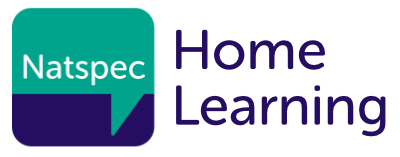Whilst at home, it is important for learners to keep up practice with their communication aids. This information on how to do so has been provided by Newfriars College
Introduce the approach or activity
The aim of the resources is to maintain a focus on the individual communication systems and strategies of the learners, implementing Augmentative and Alternative Communication (AAC) as appropriate where the learner uses a VOCA in their strategies for receptive and expressive communication skills.
Step-by-Step communicators can have a number of messages recorded onto them in a sequence. The messages are spoken in the order they are recorded by pressing the switch. The device has 75 seconds of recording time.
Describe the learner cohort you have used this with?
This resource and the activities can be adapted to support the learning of students who use a VOCA in their communication strategies and systems.
This has been designed to develop skills for our Supported Living Pathway.
Top tips and key considerations
This resource is designed to be adapted depending on the ability and skills of the learner and their communication support partners.
The messages can be used to enable the learner to participate in activities linked to Preparing for Adulthood outcomes; communication, working together, following and giving instruction, independence (imitate participation), supporting the wellbeing of the learner.
The messages recorded can be adapted depending on the cognitive ability of the learner,
The physical ability of the learner is of paramount consideration and the positioning of the device or switch. The device can be used by the learner in a variety of positions using a suitable mount.
What resources are required?
A Voice Output Communication Aid (VOCA) such as the Step by Step.
Additional AAC such as Symbol or objects may be required to support the learner to understand the messages that are conveyed.
Activity Suggestions
These ideas have been sourced from AbleNet.
- Use it to spell a name. For example, “A-L-I-C-E – spells Alice – B-R-O-W-N – spells Brown – that’s my name Alice Brown” (13 switch presses). You can vary the length of this spelling activity depending on the switching ability of the learner.
- Use it for counting. You can record the numbers from one to ten and use the device in number activities.
- See how many switch presses the user can do “Wow you got up to 8 today I wonder how many you will do tomorrow?”
- Using the device to count things in the room. “Let’s count how many people are here today”, “Let’s count how many socks there are in the washing basket.”
- Giving directions to draw a picture “How many legs?” 1-2-3-4 – The learner will respond positively to choose, which could be their smile, a blink or vocalisation. “Oh, you want 4 legs”
- Use it to participate in book reading. For example, record the pages from a small book. The user can then “read” the page by pushing the switch when each page is turned.
- Use it to be funny. Record some jokes or riddles, e.g. “Knock, knock – Police – Police to meet you – Want to hear another?”, etc. (4 switch presses).
- Use it in cooking. Record the steps of a recipe to remind everyone taking part in the cooking activity. “Break 2 eggs into a bowl – Add one cup of sugar – Whisk until pale and frothy”, etc
- Use it to get to know people. Program in a chat script to make friends and get news from people. “My name is Michala, what is yours?” – “I live in Stoke on Trent, where do you live?” – “My star sign is Scorpio what is yours?” – “My favourite colour is pink what is yours?” – etc.
- Use it to be social. Record some messages and compliments to be used to contact people. Tis could be done in a virtual way with parents/carers supporting using the relevant technology and systems. “You look nice today” – “How are you doing?” – “What’s new?” – “Have you got time for a chat?”
- Use it to say a poem or rhyme with one press for each line; Limericks work well too.
- Use it to take control. Record directions for carers at mealtimes. “I’d like a cup of tea – milk and one sugar please – I don’t like it too hot – I use a straw to drink – Thanks you are doing a great job.”

